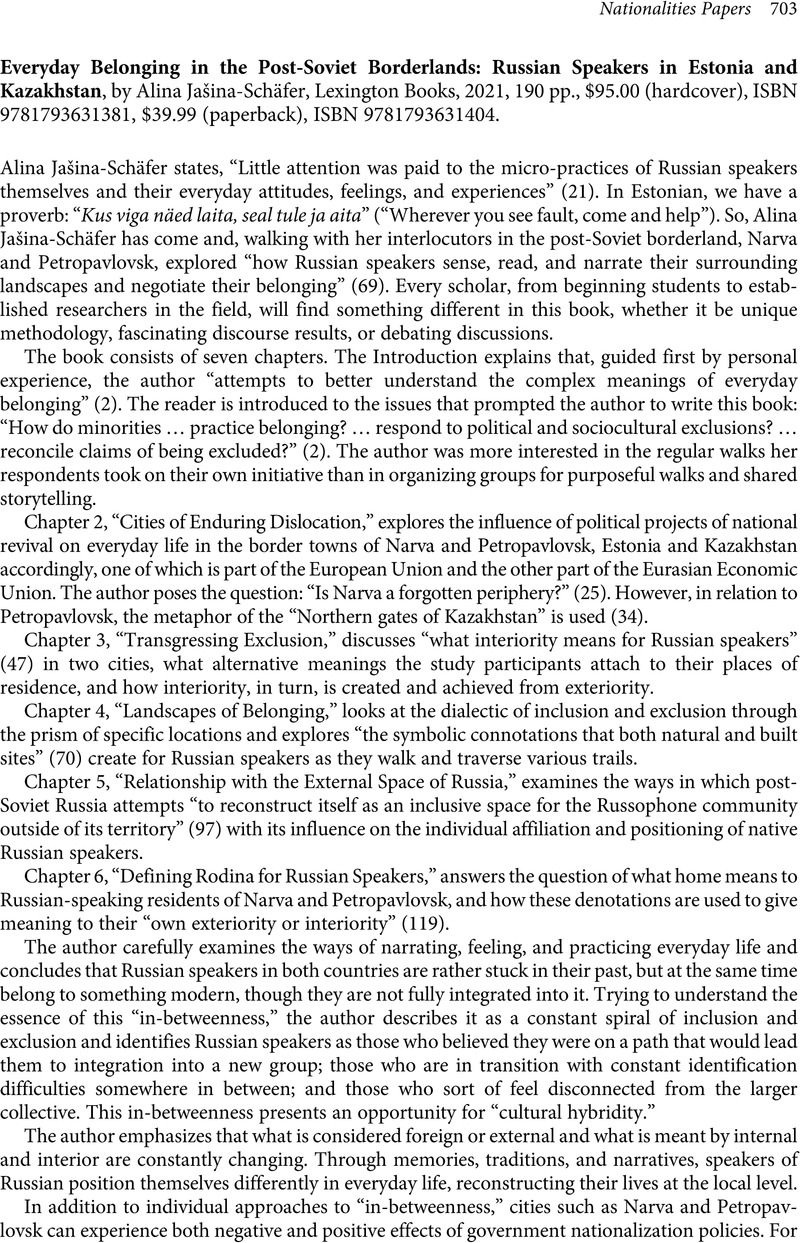No CrossRef data available.
Article contents
Everyday Belonging in the Post-Soviet Borderlands: Russian Speakers in Estonia and Kazakhstan, by Alina Jašina-Schäfer, Lexington Books, 2021, 190 pp., $95.00 (hardcover), ISBN 9781793631381, $39.99 (paperback), ISBN 9781793631404.
Review products
Everyday Belonging in the Post-Soviet Borderlands: Russian Speakers in Estonia and Kazakhstan, by Alina Jašina-Schäfer, Lexington Books, 2021, 190 pp., $95.00 (hardcover), ISBN 9781793631381, $39.99 (paperback), ISBN 9781793631404.
Published online by Cambridge University Press: 18 May 2023
Abstract
An abstract is not available for this content so a preview has been provided. Please use the Get access link above for information on how to access this content.

- Type
- Book Review
- Information
- Copyright
- © The Author(s), 2023. Published by Cambridge University Press on behalf of Association for the Study of Nationalities



